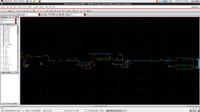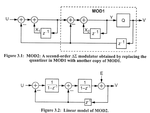Vivek_2017
Newbie level 4
Hi,
I am designing a discrete time integrator with transfer function = 1/(1-Z^-1) using model writer of the cadence virtuoso, below is the verilogA code of the integrator. But I am getting a gain of more than 1000 in the output, when applying an input signal of 900 uV (p-p).
I added the screenshot of the schematic as well as the transient output response of the integrator.


I am designing a discrete time integrator with transfer function = 1/(1-Z^-1) using model writer of the cadence virtuoso, below is the verilogA code of the integrator. But I am getting a gain of more than 1000 in the output, when applying an input signal of 900 uV (p-p).
I added the screenshot of the schematic as well as the transient output response of the integrator.


Code Verilog - [expand]
Last edited by a moderator:

